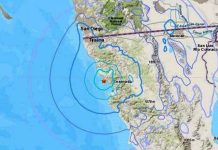SAN DIEGO, Jan. 15 (UPI) — A research team led by scientists at the University of California San Diego have published the first live recording of ruby seadragons.
Ruby seadragons are the third species of seadragon to be discovered, first described in 2015. The marine animal is part of the Syngnathidae family, which also includes seahorses.
Researchers at UCSD’s Scripps Institution of Oceanography published the first live recording of the species during a recent expedition in Western Australia. Images appeared in the journal Marine Biodiversity Records.
The team says the expedition confirmed ruby seadragons lack the ornate leaf-like appendages seen on other seadragons. The other two species use the appendages to camouflage themselves in seaweed and other sea-based vegetation.
“It was really quite an amazing moment,” study co-author and Scripps graduate Josefin Stiller said in a press release. “It never occurred to me that a seadragon could lack appendages, because they are characterized by their beautiful camouflage leaves.”
In addition to a lack of appendages, scientists observed a prehensile tail similar to those found on seahorses. The team believes the tails are used to hold on to objects in strong surges.
The expedition also revealed new details about the animal’s habitat preferences. The ruby seadragons were found in waters dominated by sponges, once considered an undesirable habitat for the species. Study authors say additional research is needed to learn more about the fish.
“There are so many discoveries still awaiting us in southern Australia,” co-author Nerida Wilson added. “Western Australia has such a diverse range of habitats, and each one is deserving of attention.”
The footage was captured using small remotely operated vehicles in waters more than 164 feet deep. Researchers captured roughly 30 minutes of video






